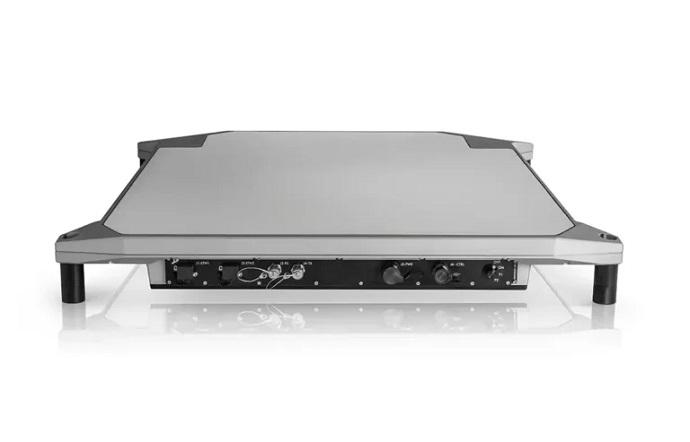The European answer to Starlink will be assisted by a small company from Rehovot: French space giant Thales has acquired the Israeli satellite company Get SAT. Thales executives confirmed the acquisition to the Breaking Defense website, without specifying the price they paid. Thales pledged to continue employing the company's 120 employees from Rehovot.
"Requirements in the market are changing dramatically thanks to Elon Musk and SpaceX," Aaron Brosnan, president of Thales’ Tampa Microwave subsidiary, said in an interview. "Today, what the U.S. Department of Defense wants is an end terminal that can communicate with any orbit, any band, at any frequency—on the move."
Will Europe challenge Musk's hegemony?
Thales is currently looking for a European solution for SpaceX's Starlink and Starshield satellite constellations. Starlink is the largest constellation of satellites in history, with about 6,000 satellites that provide high-speed internet to about 3 million end users in about 100 countries. In light of Starlink's commercial success, in 2021 the US Department of Defense ordered a parallel constellation of satellites called Starchild from SpaceX, for military purposes. The new system will be supplemented by capabilities such as light and radio observation, target tracking and early warning of missile launches. Because Starshield satellites operate as one low group, they provide more comprehensive intelligence at a better resolution than "traditional" spy satellites – and are harder to disrupt. The first dozens of Starshield satellites have already been launched, and hundreds more are expected to join them in the coming years.
But Europe cannot rely on Elon Musk's goodwill, neither in communications nor in security. With the outbreak of the war in the Ukraine, Musk opened Starlink in the country — and even donated 20,000 terminals. Starlink has enabled Ukraine's military and civilians to use essential services such as internet communications, for example for navigation and satellite positioning (GPS) in the event of both a physical attack on infrastructure and also a cyberattack. But in 2022, Musk refused the Ukrainian military's request to open the service to attack Crimea — thus effectively thwarting the attack.
Image

The EU has learned its lesson and now wants to build its own independent constellation of satellites, called IRIS² (Infrastructure for Resilience, Interconnectivity and Security by Satellite). The European constellation – jointly developed by European giants such as Thales, Arianespace, Airbus and Deutsche Telekom – will meet the continent's communications and security requirements, while at the same time trying to challenge SpaceX's almost total hegemony in the global, satellite internet market.
From 500 km to 35,000 km in milliseconds
How does all this relate to a small company from Rehovot? Well, until recently, communication and observation satellites were relatively large, heavy, "stationary" objects that orbited the Earth from a geostationary orbit (GEO – geosynchronous equatorial orbit), that is, from an altitude of about 36,000 km above sea level – and it was possible to direct a regular, fixed antenna at them. The advantage of such satellites is that not many of them are needed to provide extensive coverage. On the other hand, satellite constellations, such as Starlink, Starshield and, in the future IRIS², are designed to fly in low Earth orbit (LEO), at an altitude of about 550 km, and require electronic antennas that can locate the nearest satellite, tune in to it and jump from it to the next satellite – automatically and in a short time. The advantage of such constellations lies in their large number of small and inexpensive satellites, which provide equally wide coverage, higher resolution and redundancy (if one satellite breaks down, the others make up for its absence).
Image

This is where the Milli Sling Blade antenna, developed by Get SAT in Israel, comes into the picture. The terminal's electronic antenna communicates in Ka-band and can be automatically tuned onto satellites moving above it, both in low Earth orbit (LEO), and in geostationary orbit (GEO), as well as switching between satellites in LEO and satellites in GEO in milliseconds. The Israeli made terminals provide total satellite coverage, with no gaps or glitches between different groups (e.g. between Starchild and IRIS²) and between different orbits (e.g. between Starlink and higher observation satellites), even when the terminal is installed on vehicles that are themselves in motion – such as vehicles, trains and ships.
Electronic antennas have become a relatively common product in recent years due to their versatile coverage. Milli Sling Blade has further advantages. In the event of an attempt to block the signal received from the satellite, the adjustable antenna knows how to "turn its back" to the source of the block, thus minimizing the interference to the signal. The electronic terminal also knows how to shape and rhythmize the electromagnetic waves it transmits, which makes it possible to encode the information in a way that bypasses attempts at disruption or tapping.
At an estimated cost of 6 billion euros, the IRIS² constellation is one of Europe's most ambitious space communications projects. It is nowhere near SpaceX's investment in Starlink, but it is an attempt to gain a foothold in a rapidly evolving market. Time will tell whether EU space giants such as Thales and Deutsche Telekom will be able to give SpaceX a fight, but one thing is already certain – in a few years we will see Israeli made terminals on houses, infrastructure facilities and vehicles throughout the continent.











